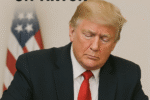Introduction
In a bold move that’s sending ripples across global markets, former President Donald Trump has announced a new round of sweeping tariffs targeting a wide range of imported goods, including medicines, furniture, and heavy trucks. With tariffs as high as 100% on certain items, this decision is being seen as a dramatic shift in U.S. trade policy—one that could have lasting implications for businesses, consumers, and America’s role in the global economy.
So, what exactly is happening, and why does it matter?
What Are Tariffs, and Why Are They Important?
Tariffs are taxes imposed by a government on goods imported from other countries. They are used to:
- Protect domestic industries
- Generate revenue
- Punish trade practices deemed unfair
However, tariffs can also raise prices for consumers and escalate trade tensions between nations.
Breakdown of the New Tariffs
According to the official announcement, the tariffs are set to take effect from October 1, 2025, and cover a range of categories:
Key Targets:
- Branded prescription drugs: Up to 100% tariff
- Heavy-duty trucks: 25% tariff
- Imported home and office furniture: 35% tariff
The move is being justified as part of Trump’s “America First” economic policy, aimed at boosting domestic manufacturing and reducing reliance on foreign supply chains.
Why Trump Is Doing This (Again)
Trump’s trade policies have always leaned toward economic nationalism. His administration from 2017–2021 saw a trade war with China, heavy tariffs on steel and aluminum, and renegotiated trade deals like USMCA (which replaced NAFTA).
This new round of tariffs reflects a few key motivations:
- Appealing to manufacturing states in an election year.
- Pushing pharmaceutical production back to the U.S.
- Punishing countries (notably China and Mexico) for “unfair competition.”
Trump’s campaign has reiterated that these tariffs are a “defensive economic strategy,” not a political maneuver.
How Will These Tariffs Affect Consumers?
While the intent is to protect American industries, consumers often bear the cost of tariffs in the form of higher prices. Here’s how:
Possible Consumer Impacts:
- Prescription drugs could become significantly more expensive, especially for seniors and those without comprehensive insurance.
- Truck prices may go up, affecting businesses dependent on logistics and freight.
- Furniture and home goods could see price hikes just ahead of the holiday shopping season.
Economists warn that inflation may rise, and middle- and lower-income families may feel the financial pinch most sharply.
Impact on American Businesses
The business community is divided over the decision:
- Manufacturers of trucks and furniture have welcomed the move, seeing it as a way to regain market share.
- Retailers, pharmacists, and trucking companies are raising red flags, citing potential supply chain disruptions and reduced competitiveness.
Small businesses, in particular, could struggle if they rely heavily on imported goods or raw materials now subject to high tariffs.
Global Reactions: Trade Tensions on the Rise
The international response has been swift:
- China has condemned the tariffs and hinted at potential retaliatory measures.
- European Union officials are reviewing the impact and considering lodging complaints at the World Trade Organization (WTO).
- Mexico and Canada, both major furniture exporters, have expressed “deep concern” over the fairness of the policy.
This could ignite another round of trade wars, potentially hurting global economic recovery.
Political Implications Ahead of 2026 Elections
With midterms approaching and a potential 2028 presidential run, Trump’s move is being viewed as strategic, aimed at rallying his political base—particularly in industrial regions like Ohio, Michigan, and Pennsylvania.
However, critics argue the decision is short-sighted and prioritizes political gain over long-term economic stability.
Is This the Right Move for the U.S.?
Whether you see this as a patriotic push for self-reliance or an economically risky gamble, one thing is certain: these new tariffs will reshape trade dynamics in ways that affect everyday Americans.
Pros:
- Boosts domestic manufacturing
- Reduces foreign dependency
- Potential job creation in select industries
Cons:
- Higher consumer prices
- Trade retaliation risk
- Inflationary pressure
Final Thoughts
The return of sweeping tariffs under Donald Trump signals a renewed era of protectionist trade policies in the U.S. While it may offer short-term gains for some industries, the long-term economic impact remains uncertain—especially as global markets adjust and tensions rise.
As consumers and businesses brace for the fallout, the critical question remains:
Can America balance economic patriotism with global competitiveness?













